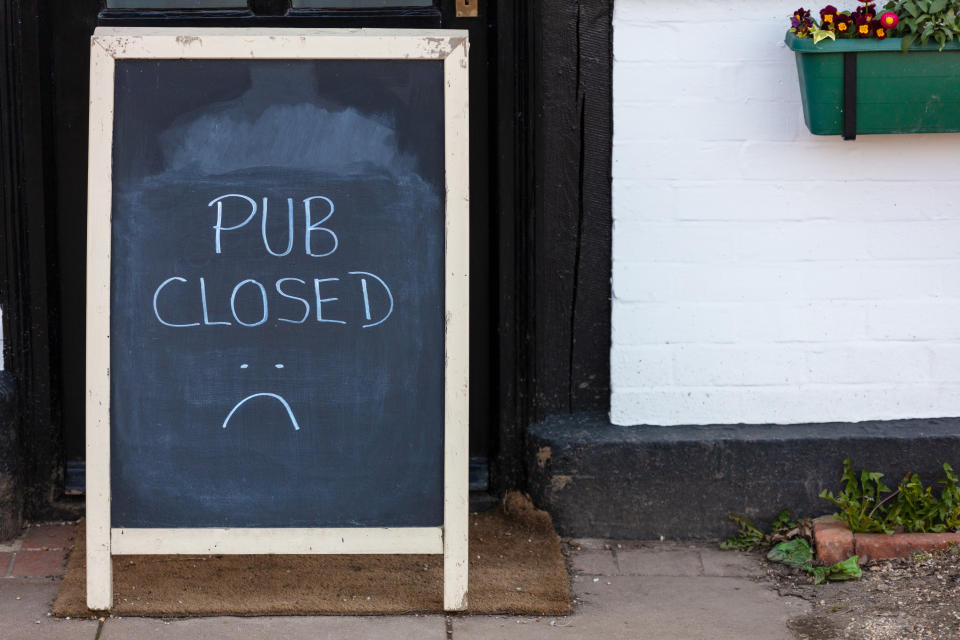Coronavirus: Nearly a third of Britain's licensed premises were forced to shut in October

Almost a third of licensed premises including pubs and bars were forced to shut their doors last month amid the pandemic, an issue likely to worsen as the UK goes into its second lockdown.
A study by consultancies CGA and AlixPartners showed that 69.9% of Britain’s licensed premises were trading at the end of October 2020, a fall of more than ten percentage points on sites open a month earlier (80.4%), and equivalent to nearly 12,000 sites closing their doors last month.
It is still unclear how many of these closures are temporary or permanent. In mid-October, a CGA survey found that members of three leading trade groups expected 43% of closed outlets would not reopen. With trading conditions made even tougher since then, this figure may well rise.
The research showed many of October’s closures were triggered by the government’s three-tier system of restrictions, which forced pubs and bars in ‘very high’ alert areas to shut unless they were serving substantial meals.
Barely half (52.8%) of licensed premises in Tier 3 areas were open at the end of October, far below the numbers in ‘medium’ (83.6%) and ‘high’ (82.8%) alert areas. There were also widespread closures in Wales as a result of the ‘firebreak’ lockdown, and across the central belt of Scotland.
The study highlighted the impact of not just the tiered system but also the 10pm curfew on drinking-out venues like high street pubs and bars. Only 63.1% of drink-led sites were open at the end of October, compared to 79.9% of food-led operators and 81.3% of casual dining restaurants.
READ MORE: Birmingham pub fined £10,000 for holding lock-in with dozens of drinkers
The report also noted the stress of restrictions on small businesses. Around 63% of independent sites were open at the end of October — far fewer than the 81.8% of managed venues that were in operation. This suggests well-capitalised pub and restaurant groups will be better placed to survive the second lockdown than small firms relying on savings, loans and overdrafts.
Karl Chessell, business unit director for food and retail at CGA, said “it’s very clear from this report that every new restriction damages businesses’ ability to trade. With England now entering a second lockdown, we are unlikely to see Britain’s licensed premises return to the levels seen in the summer, let alone pre-pandemic, for a long time.”
He said financially robust companies should be able to sustain themselves through the lockdown, and the extension of the government’s furloughing scheme will help. But he urged for more government support to “prevent a wave of permanent closures over the winter.”
Last week it was reported the government U-turned on guidance for the second lockdown which previously suggested a ban on restaurants and pubs serving takeaway alcohol.
English pubs and restaurants welcomed the move, after previous warning the ban would result in “thousands of gallons of beer (being) poured down drains.”
Watch: What are negative interest rates?

 Yahoo Finance
Yahoo Finance 